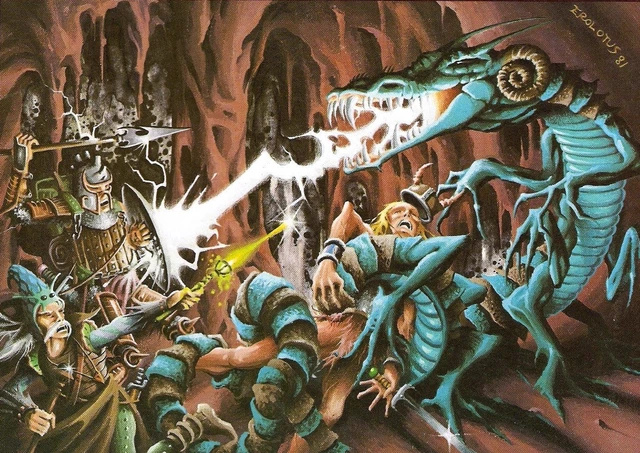Earlier today, I was suddenly struck by the fragment of a quote, which I though must have come from one old-school RPG essay I read years ago. Maybe something from The Alexandrian, or from JB Blackrazor?
I got digging, and quickly figured out that it wasn’t from a tabletop source at all. It was A Letter from a Dungeon, by Ernest Adams, which concerns not D&D but Diablo and similar hack-n-slash CRPGs.
The article, taking the form of a letter written by a videogame protagonist to their teacher, skewers the design of Diablo and its ilk, and even though it’s not what Adams was writing about, some of the lessons from the letter can be fruitfully applied to pen and paper roleplaying.
First, the quote which reminded me of the piece:
In this business I am no hero, no warrior; I am an exterminator, a dog killing rats in a crate. If we fight on enough to get tired, they can eventually get the better of us, but for another thing: we have a magic door which allows us to return instantly back to the town. There we may rest as long as we like. I have no fear that this letter may never find you – will rot away beside my body here in the dungeon, for in ten seconds I can be back in safety … Courage is the conquering of fear, yet I have no fear; no reason to fear, and therefore no need for courage. The stirring stories I read as a child in school are meaningless here; they provide no example to guide me. Richard the Lionheart did not cast a spell and fly home to England whenever he felt tired! He is no adventurer who returns upon a moment’s whim to sleep in safety every night.

If it is possible to trivially leave the dungeon and return to rest in town, the dungeon ceases to be risky. The videogame example is comical, where one can fast travel to the dungeon entrance or town at will. But in pen and paper RPGs, where all actions take place at the pace and level of detail adjudicated by the DM, it is possible to do the same in effect. If the party may leave the dungeon at will without risk, or even if all they must do is disengage from combat to escape, then the DM’s description of the party leaving the dungeon is no different from opening a magic door and returning to town.
This may be remedied just by making exiting the dungeon riskier or otherwise challenging. To use the example of Castle Xyntillan, both of the main entrances have some form of risk associated with them, but that risk mostly manifests when leaving through them, not coming in. There are also plenty of examples, mostly from old school dungeons, of features specifically intended to confuse mapping and make finding the exit more difficult, such as spinning corridors, teleporters and the like.
Liking the post? Read the full thing on my blog below:
